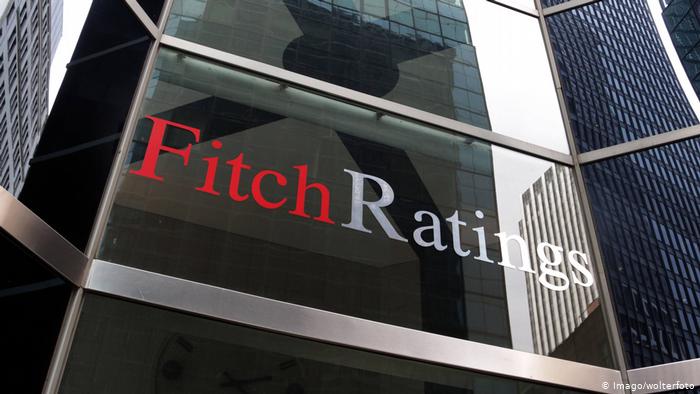16/09/2023
16/09/2023

KUWAIT CITY, Sept 16: Fitch Ratings has affirmed Kuwait’s long-term foreign-currency issuer default rating (IDR) at ‘AA-’ with a stable outlook. Kuwait’s ‘AA-’ rating balances its exceptionally strong fiscal and external balance sheets against a political context that makes fiscal consolidation and other reforms difficult, evidenced by the absence of meaningful fiscal adjustment and the absence of legislation since 2017 to authorize debt issuance. Fiscal and structural challenges stemming from heavy oil dependence, a generous welfare state a large public sector, and low governance indicators also constrain the rating, according to the latest report by the credit rating agency. With exceptionally strong external assets, Kuwait’s fiscal and external balance sheets remain among the strongest of Fitch-rated sovereigns.
“We forecast Kuwait’s sovereign net foreign asset position will average 505 percent of GDP in 2023-24, remaining one of the highest among all Fitch-rated sovereigns and more than 10x the ‘AA’ median,” according to Fitch report. The bulk of the assets are held in the Future Generation Fund (FGF) managed by the Kuwait Investment Authority (KIA), which also manages the assets of the General Reserve Fund (GRF), the government’s treasury account. Gross government debt/GDP is low, at 8.7 percent of estimated GDP in the fiscal year ending March 2023 (FY22; gross government debt includes liabilities by government entities that borrow separately from the Treasury).
However, assuming the passage of a debt law in FY24, limited fiscal reform, and lower oil prices, we forecast government debt will more than double to 24 percent of GDP in FY25 and rise further in subsequent years, owing to projected fiscal deficits. Nonetheless, during the forecast period, we expect debt levels to remain well below the projected 2025 ‘AA’ median of 43.6 percent of GDP. Opposition Dominates New Parliament: Politicians critical of government policies retained a majority of elected seats after parliamentary elections in June 2023, the third since December 2020 and the seventh since 2012.
The gridlock between the government and parliament has undermined the government’s ability to pass key legislation and implement significant reforms. Fitch believes that while a joint committee bringing together the government and the national assembly has been set up and a new speaker elected unanimously, it is unclear if this will be sufficient to unlock the legislative process. Even if there is progress, opposition MPs may also not want to pass some laws without concessions on their populist demands, preventing speedy reform of fiscal rigidities. On structural fiscal challenge, the report says that nearly 80 percent of government spending consists of sticky current spending, including salaries and subsidies, and about 84 percent of Kuwaiti nationals in the labor market are employed in the public sector.
The fiscal break-even oil price (excluding investment income) will remain high (at an average of around USD 90/bbl in FY23- FY25) and the non-oil primary deficit/nonoil GDP is extremely weak at around 90 percent, significantly worse than regional peers. In a fresh attempt at debt law, the government is seeking to pass a new debt law to allow relaunching of government debt issuance, which has been halted since 2017. “We incorporate the assumption in our forecast, notably for government debt, that a debt law is passed in FY24, despite considerable risks of further delays,” the report reads.
In the absence of a debt law, Fitch assumes the government would still be able to meet its limited debt service obligations in coming years given the assets at its disposal. However, the difficulties in passing the law forced the government in recent years to rely on stop-gap measures, unusual for Kuwait’s rating level, to replenish the liquid assets of the GRF. The government cannot directly access the FGF’s assets without parliamentary approval. On the possibility of budget deficits’ return, the report says that the budget recorded a surplus in FY22 due to surging oil revenue, marking its first surplus in the past nine years under the government’s reporting convention, which does not include KIA’s investment interest income in revenue.
The fiscal surplus was KWD6.4 billion (12 percent of estimated GDP), following a deficit of KWD 4.3 billion (10.1 percent of estimated GDP) in FY21. Fitch’s budget calculations include an estimate for investment interest income, which is not officially disclosed. “We forecast a return to budget deficits to GDP ratios of 0.7 percent and 0.9 percent in FY23 and FY24, respectively, as oil prices fall, spending pressures persist, and progress with fiscal reforms remains limited,” the report cautioned. Excluding investment income, the deficits would average 9.7 percent of GDP, marking a substantial increase in financing needs.
Regarding the large expenditure increase, Fitch said, The FY23 budget proposes an expansionary fiscal policy, with spending up 17 percent over the FY22 outturn, despite the assumption of lower revenues due to a lower average oil price and further oil production cuts. The budget projects salaries to rise by about 14 percent over FY22, reflecting the costs of nearly 22,000 new public sector hires and increased employee allowances, while subsidies (including temporary electricity subsidies) are set to rise by 35 percent to cushion the impact of the rising cost of living on Kuwaitis.


